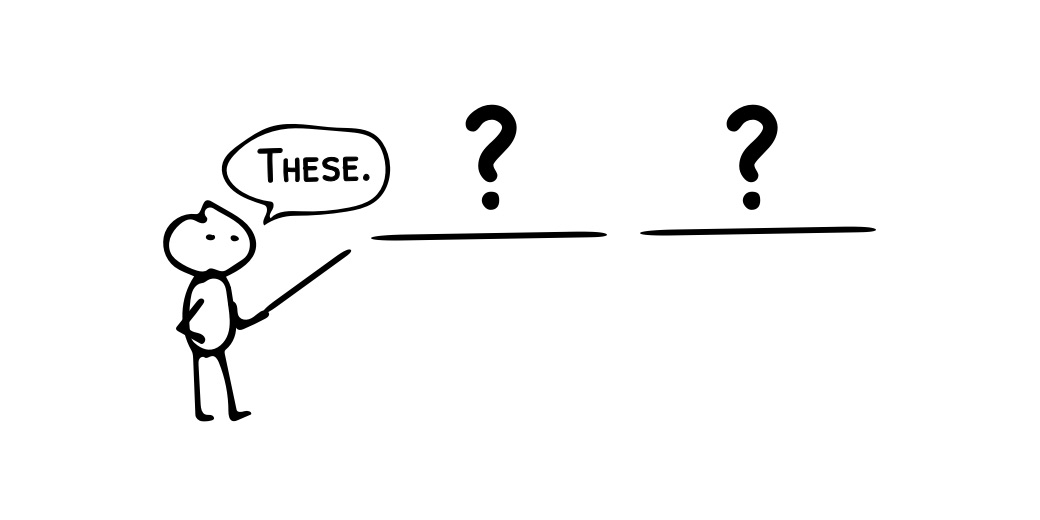
When it comes to key messages, the biggest mistake companies make is to focus too much on themselves. On an intuitive level, it’s easy to think your messaging should answer one simple question.
“What we do”
If you can provide a clear answer to that, it would make sense that someone can decide whether they’re interested in your business.
The problem is that this is a self-centered approach. It puts an emphasis on the description of your product, service, or features.
But that’s not what your customers are interested in.
What they actually care about are the benefits you provide to them.
If your business doesn’t understand how to serve the fundamental needs of your customers then it’s not going to have long term success.
That’s why the two words every business should focus on with their marketing messages are:
“For customers”
In other words:
“What we do for customers”
An even better approach is to pose it as a question from your customer’s perspective.
“What do you do for me?”
It may sound obvious, but the reality is that a lot of companies don’t message this way.
My consultancy, Map & Fire, did a big research project analyzing the marketing messages of 600 companies. We looked at the style, length, and word choice of their key messages.
What we found was that 99% of the top performing companies used benefit-focused headlines. With the bottom performing companies, only 35% used benefit-focused headlines. The other 65% of low performers had functional, descriptive, us-first messages.
You can download the full study here.
The top companies understood that their customers shouldn’t do the heavy lifting.
When a business focuses its messaging only on “what we do”, then it’s up to the customer to figure out how that helps them.
Not only is that more mental work for customers, but they also may not arrive at the right conclusion. There’s a lot more room for misinterpretation or misunderstanding of why the business is valuable for them.
When a business focuses on “what we do for you”, it bypasses that extra step and gets straight to the point.
It doesn’t mean that customers will want those benefits, but it keeps them focused on the right question. In other words, if you only have someone’s attention for a few seconds it’s better to spend that time on “Does this benefit my life?”, versus “What is this thing?”.
To highlight the differences in approach, let’s look at examples from one specific industry.
The Battle For Better Sleep
The mattress industry has gone through some major disruption over the last 10 years. Over that time, the bed-in-a-box home delivery process has exploded.
As a result, there’s been a lot of money invested into companies all competing for customers who want a better night’s sleep.
Here are the key marketing messages used by some of the top brands in the space:
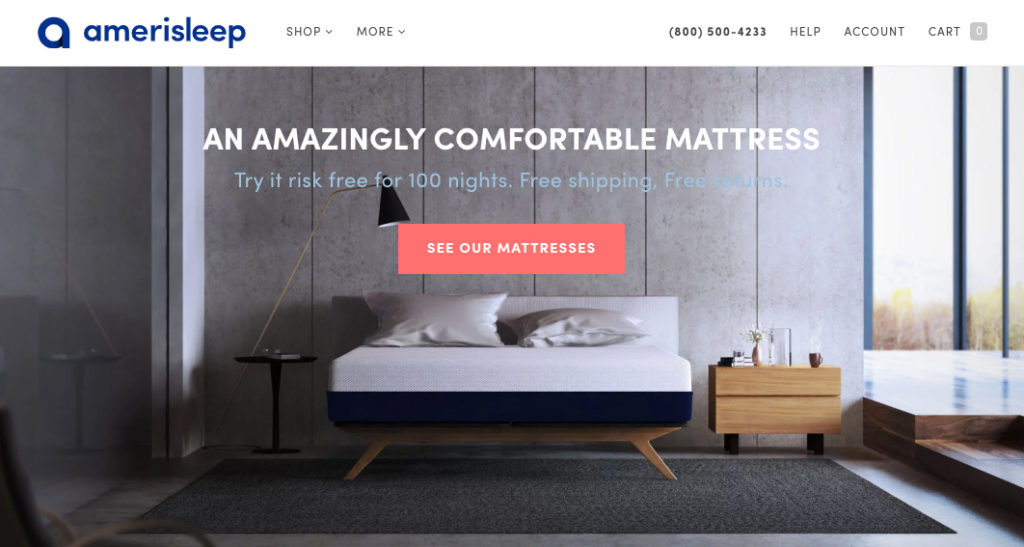
Amerisleep: “An Amazingly Comfortable Mattress”
This is about as basic and functional as you can get in terms of a marketing message. There’s no sign of what makes this unique or what the benefits are.
I’m not a mattress expert, but I’m guessing most consumers would say a mattress that’s “comfortable” is table stakes at best.
There’s nothing here to set the company apart or help customers understand why Amerisleep is perfect for them.
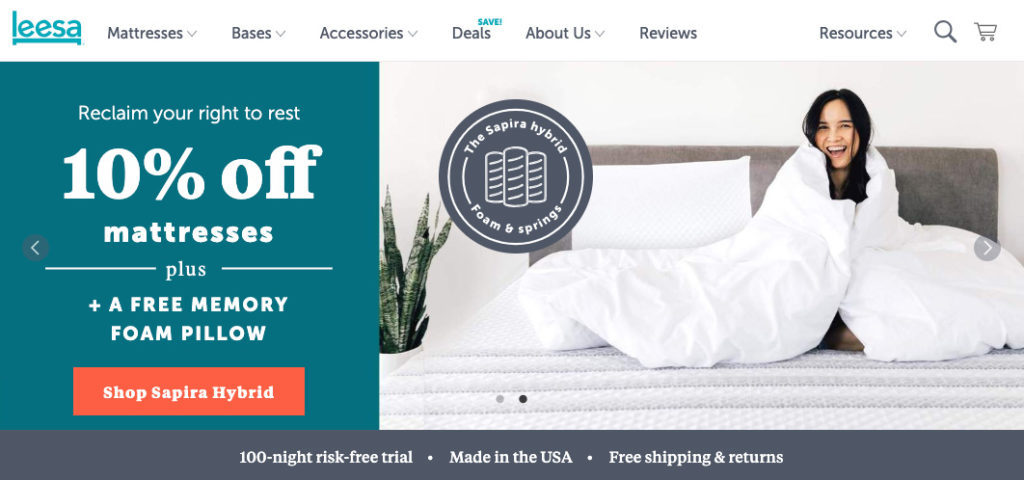
Leesa: “Reclaim Your Right to Rest – 10% Off Mattresses, Plus A Free Memory Foam Pillow”
For an industry that’s been full of disruption it’s funny to see them fall back into the discount races that were the cornerstone of the old mattress industry.

Saving money is a benefit, but from a positioning perspective it’s totally superficial. It takes the focus off differentiation of the product itself and puts all the focus on price.
If price becomes the main focus for customers, then it becomes a war of who can offer the bigger discount. Strategically this is referred to as “the race to the bottom”.
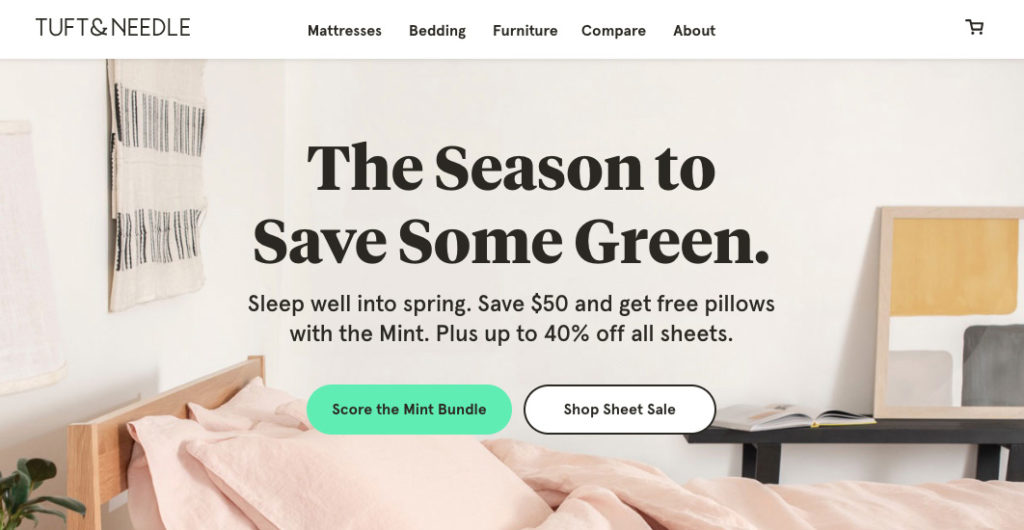
Tuft & Needle: “The Season To Save Some Green.”
I bought a Tuft & Needle mattress about 3 years ago and have loved it. I bought into their quality, their customer care, as well as the founders’ story.
Sadly, this current message is now indistinguishable from what we see on Leesa above.
Why would I choose one of these over the other? Again, the main reason they provide is to focus on price and freebies.
If the percent of savings seems worse, I’ll just go with someone else.
There has to be a better story to tell if you want to position yourself away from the competition.
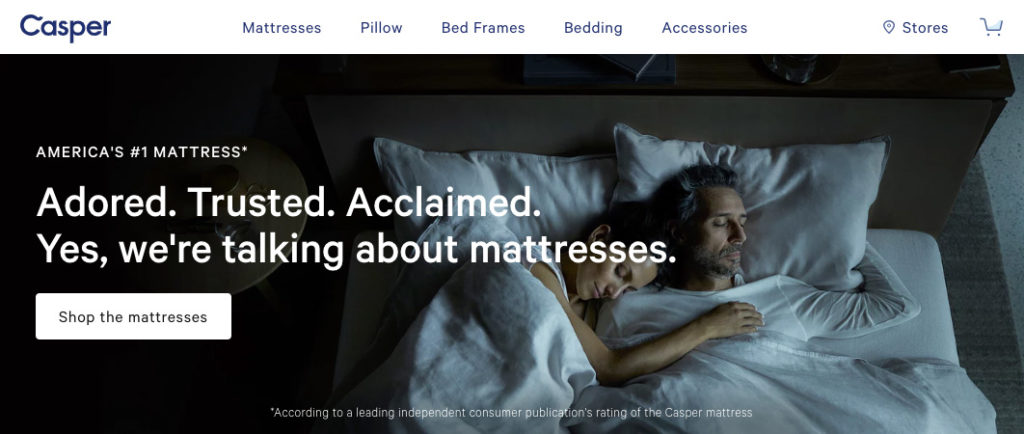
Casper: “Adored. Trusted. Acclaimed. Yes, We’re Talking About Mattresses.”
Casper gets a little closer here with a benefit focus. Their angle is to leverage social proof as a market leader. The benefit is that you can feel confident in a purchase because a lot of other people did the same thing.
This is much better than a focus on discounts, but it’s still somewhat of a side door. Rather than showing the benefits of the product they focus on the benefits of trusting their track record.
It’s not a huge leap to get from “other people like this” to “I’ll like it too”. But if a customer is thinking “Why will this improve my sleep?” they’re out of luck on why Casper should be their choice.
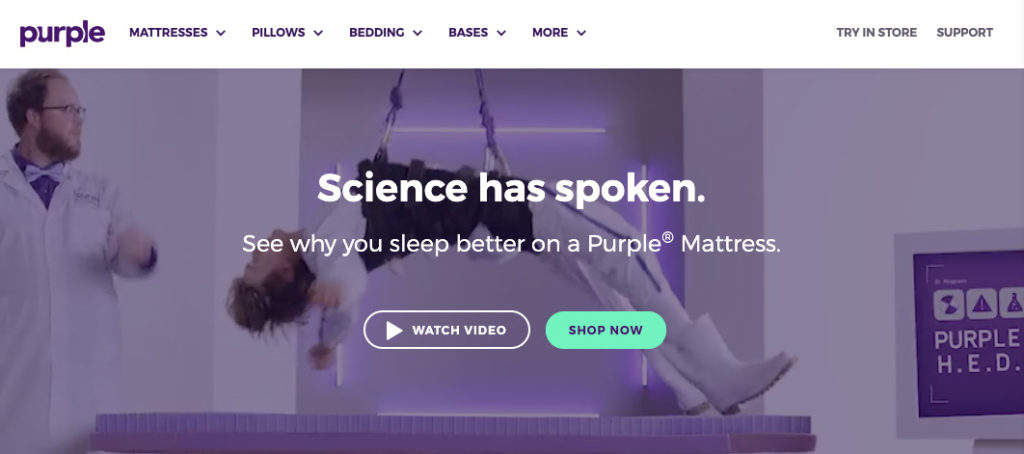
Purple: “Science has spoken. See Why You Sleep Better On A Purple Mattress”
Yes! Finally, we have a company that’s going straight to the heart of it.
Why will Purple help me sleep better? Science. Why should I pick them over the competition? Science. Why will I remember them? Science.
Now, you do have to watch the video to get into the details of those benefits, but the point is clear. Purple is a better product because they’ve developed a unique approach to their mattresses based on, wait for it…science.
“Science” is of course shorthand for years of research and development work done by their team. The important thing though is that it conveys that benefit to the user and creates a strong point of differentiation.
Purple also has a fantastic tone with their brand where they use humor to make the benefits of science digestible.
You can watch here, here, and, here.
It’s Not About You, It’s About Them
It’s hard to write great messaging. It has to serve your business in a lot of different ways. It takes time and testing to figure out the combination of words that speaks best to your audience.
But the big takeaway again is to describe not just what you do, but what your customer hopes to accomplish.
Do the heavy lifting for your customers. Get them to spend less time understanding what you provide and more time on how you’ll improve their life.
If you can accomplish that, you’ll engage more customers and create a stronger position in their mind.



